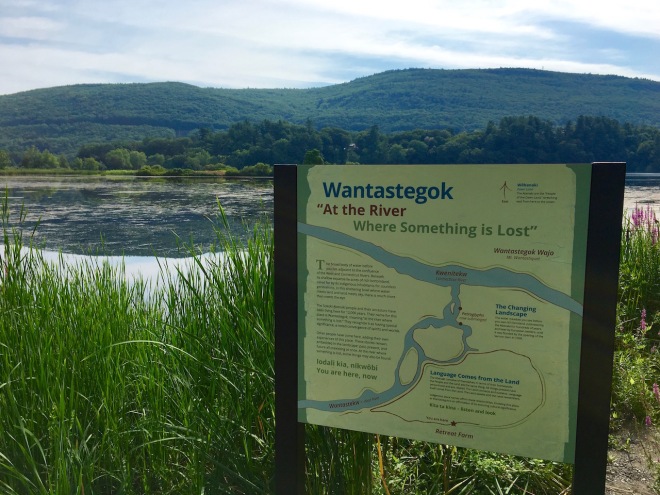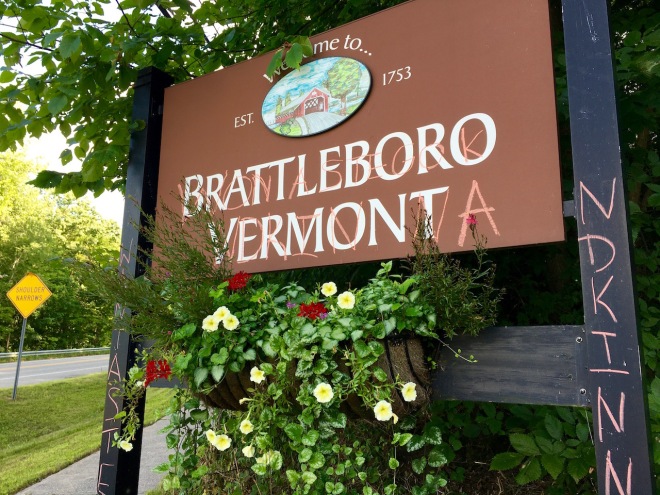So, this happened: observations and extrapolations.
About two weeks ago, on August 13, 2020 – building upon a multi-faceted exchange that had already been underway for about four years – Abenaki community members, in collaboration with the Retreat Farm, dedicated a marker near the water’s edge. The site chosen was and is not coincidental. It is a place where worlds come together – sky, land, and water – a place that has cared for many and has been cared for in return, for thousands of summers. The marker is a recognition of the enduring relationship between People and Land – the duality embodied by indigeneity. Through the deliberate action of “Reclaiming Wantastegok” – restoring the space within which both this place and its occupants are singularly identified – a process of remembrance and reconnection has been recognized and enabled. See here and here for local media reports on the day’s celebration.
The event hosted its maximum allowable number of guests: 150 at an outdoor venue, according to the state’s Covid-19 guidelines. Sadly, a few had to be turned away. But, by all reports, the experience was as well-received as it was attended. Many folks traveled home having happily added to their understanding of being an integral part of one’s surroundings. The word “Wantastegok”, spoken aloud, reaffirmed the Place where it had first been voiced, so many rivers ago. A fresh dialogue between People, Land, and Water was convened, mixing old words with new, and Original Peoples with more recent arrivals. An opportunity for a community to learn together what it means to be in relationship: hard truths, healing connections, humbling realizations, affirming values.
A little over a week later, someone decided to chalk the Abenaki words “Wantastegok” and “Ndakinna” on the “Welcome to Brattleboro” sign just 300 feet further south. Both sign posts were tagged, and the words Brattleboro, Vermont overwritten as well. It was a little jarring, and dismaying, to witness. What was the point of this?
I posted the discovery on Facebook for reactions, thinking that perhaps most of the respondents – in common with the proponent of this action – would have known that this dialogue for change was already well underway in the community, a shared effort, and forefronted by Indigenous voices. I didn’t count on Facebook’s randomized algorithm; consequently, many of the commenters were not aware of the previous week’s events, much less the lead-up during the previous years. No doubt the chalk-wielder, however, was well-aware because they knew the significance of these two words and of their proximity.
Some of the post comments, though, were right on the mark. This, from Amber Arnold of the SUSU Collective, expresses it succinctly:
“In my opinion….which doesn’t matter much as I am not Abenaki, but I would say it matters more so who wrote it and if it was a collective decision I guess? If someone outside of the Abenaki community wrote on the sign it seems it could be harmful because then it just puts you in a position to seem responsible or take the blame or scrutiny I guess or negativity from others. If it was a collective decision made in your community and you all feel that it is needed and important than I believe it is a good decision…but in my opinion really depends on who wrote it. It always sucks when well intentioned outsiders do these things because it puts lots of labor on the actual people who experience attempted erasure.”
Wliwni – thank you, Amber.
And, to everyone: we can do better, together. And we will.

